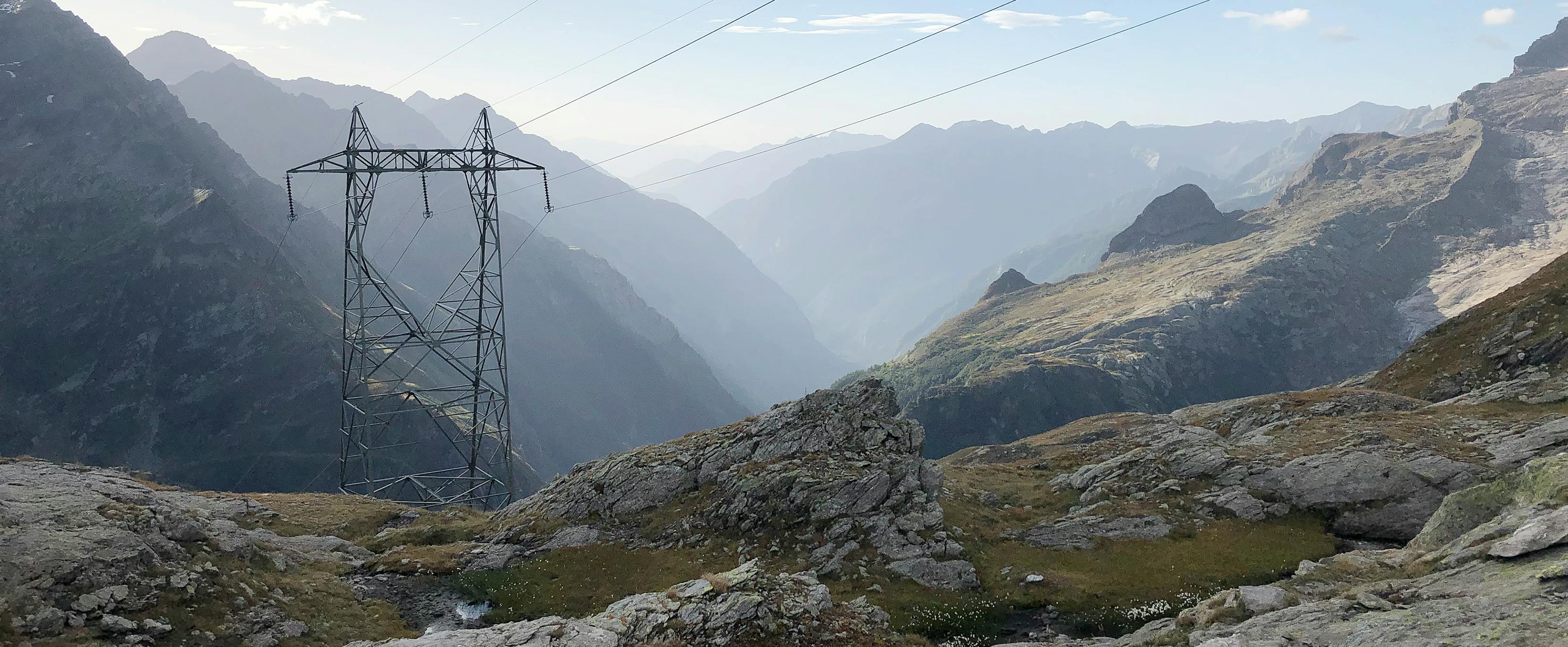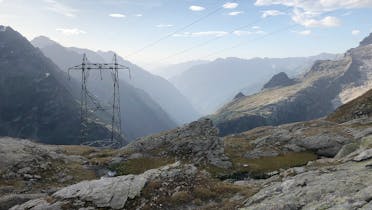
The Swiss electricity grid does not end at the national borders, but is connected to the grids of Europe over thousands of kilometres. Ensuring the stability of this system and guaranteeing a seamless supply of electricity is a demanding task – which will become even more complex in the future. Asja Derviškadić, Grid Studies Engineer at Swissgrid, tells us in this interview what part she plays in her role and shares her experience of working at Swissgrid as an engineer.
Asja Derviškadić, we all use electricity every day. What do you need the most electrical energy for in your personal everyday life?
I consume the most electricity for the Internet. I go online every day and use digital tools and online services in virtually every aspect of my life: at work, for entertainment and to communicate with my family. Life without this connectivity would be extremely difficult for me.
You are also professionally involved with electrical energy: you work as a «Grid Studies Engineer» for Swissgrid. What tasks does this job comprise?
Swissgrid operates Switzerland’s transmission grid. This extra-high-voltage grid is around 6,700 kilometres long and forms the backbone of our secure electricity supply. It is a highly complex system that requires smoothly functioning infrastructures, permanent management of electricity flows, and close cooperation with our national and international partner companies – around the clock. The transmission grid only works if the production and consumption of electricity are in equilibrium. Our operators monitor the Swiss transmission grid and take the appropriate measures to ensure grid stability. They do this on the basis of different models. And that’s where my team and I come in. We develop grid models and simulations for a short-term and a longer-term horizon. To do so, we use state-of-the-art technical resources to carry out studies and calculations from which we can subsequently derive digital models for the transmission grid. The focus is on answering questions such as: how will the extra-high-voltage grid behave in the coming days, weeks and months? Is security of supply guaranteed? And what would happen if one or more essential systems in the system failed? The models and simulations we develop then serve as a decision-making tool for the operators and as a means of ensuring grid stability.
The demand for electricity is increasing. What are the major challenges and issues that will occupy you today and tomorrow?
Switzerland’s grid is much more complex today than it was in its early days. It is also inextricably connected to the grids of the other countries in Central Europe: we are now part of an electricity generation and distribution system that stretches from southern Italy to Denmark and from Portugal to Turkey. Consequently, smooth operation requires a huge amount of communication and coordination. The existing processes have proven their worth, but they are already complex and will become even more demanding in the coming years. Another challenge is that although at Swissgrid we are responsible for the Swiss electricity grid at extra-high-voltage level, the distribution of energy to the low-voltage power grids and to households is taken care of by other players. We are already working very closely with our partners at the lower grid levels. This good cooperation will become even more important in the future. All the more so because decentralised electricity generation and supply place new demands on the grid. In other words, we operate in a continuously evolving system and must ensure stability within this dynamic environment at all times. We meet these challenges with our expertise and experience on the one hand, and with new, data-based solutions on the other.
You graduated from La Sapienza University in Rome with a Master’s degree in electrical engineering and then went on to obtain your PhD from EPFL. What made you choose this career path?
I have always been very passionate about engineering and electricity. My parents are both engineers; my father worked in the energy sector and my mother in IT. My elder brother is also an engineer. But none of them have a PhD (laughs). As you can see, I was lucky enough to grow up in an environment where technology and engineering were regarded positively and I had role models to look up to. It was clear to me early on that I too wanted to devote myself to engineering. I also wanted to pursue a career that would allow me to help solve climate challenges.
People from all cultures and backgrounds come together at Swissgrid to work on new solutions and ideas.
Asja Derviškadić, Swissgrid
What is your experience of working at Swissgrid?
My impressions are extremely positive. I’ve been working at Swissgrid since October 2020, and before that I could hardly wait to put the expertise I had acquired into practice. I can do that here at Swissgrid, which motivates me enormously and fills me with pride. I also appreciate the cooperation and exchanges with my colleagues and teammates. Another plus point is the international and interdisciplinary environment within the company: people from all cultures and backgrounds come together here to work on new solutions and ideas. There is a great deal of diversity. In my team, for example, out of seven people, only two are native Swiss. So we have an exciting mix that I believe promotes innovation. And last but not least, I really like the close cooperation with other companies as well as with Switzerland’s first-class educational institutions.
You mentioned cultural diversity. At the same time, the proportion of women in technical sectors is still rather low. What is your experience of this in your daily work – and what is the reason for it?
It is an undeniable fact that women are still painfully underrepresented in technical professions. That’s why I consider it essential for us to lead the social discourse on the subject, to determine the reasons for this shortfall and to find solutions together. As I’ve already mentioned, I myself was lucky enough to grow up with strong role models. I looked to my mother, who excelled as an engineer. I was never given the feeling that technology was only for boys. However, I realised how widespread this view is when I went to university. I was one of just two women in my year, while at the same time there were 60 men studying with me.
Female role models are a key factor. We need more women engineers in management positions.
Asja Derviškadić, Swissgrid
In your opinion, what can and must business and society do to inspire more women to work in technical sectors?
Female role models are a key factor. We need more women engineers in management positions. Companies have a responsibility to create the appropriate framework conditions so that more well-educated women can take on management functions. As a society, we must in turn finally leave the stigma of «technology is only for boys» behind. Earning a PhD was not only a reward for all my hard work, but also a kind of protective shield.
A shield?
Yes, because unfortunately, as a woman you have to provide extra proof of your abilities in many situations. The PhD underlines my skills and prevents any discussion. But that shouldn’t be necessary. If we take action on an economic, personal and social level, I’m absolutely convinced that we will see more women in technical professions and management positions. This is important not only for reasons of fairness and equality, but also to counteract the shortage of skilled workers that particularly affects technical sectors. Fortunately, I found a very positive environment at Swissgrid in this regard.






